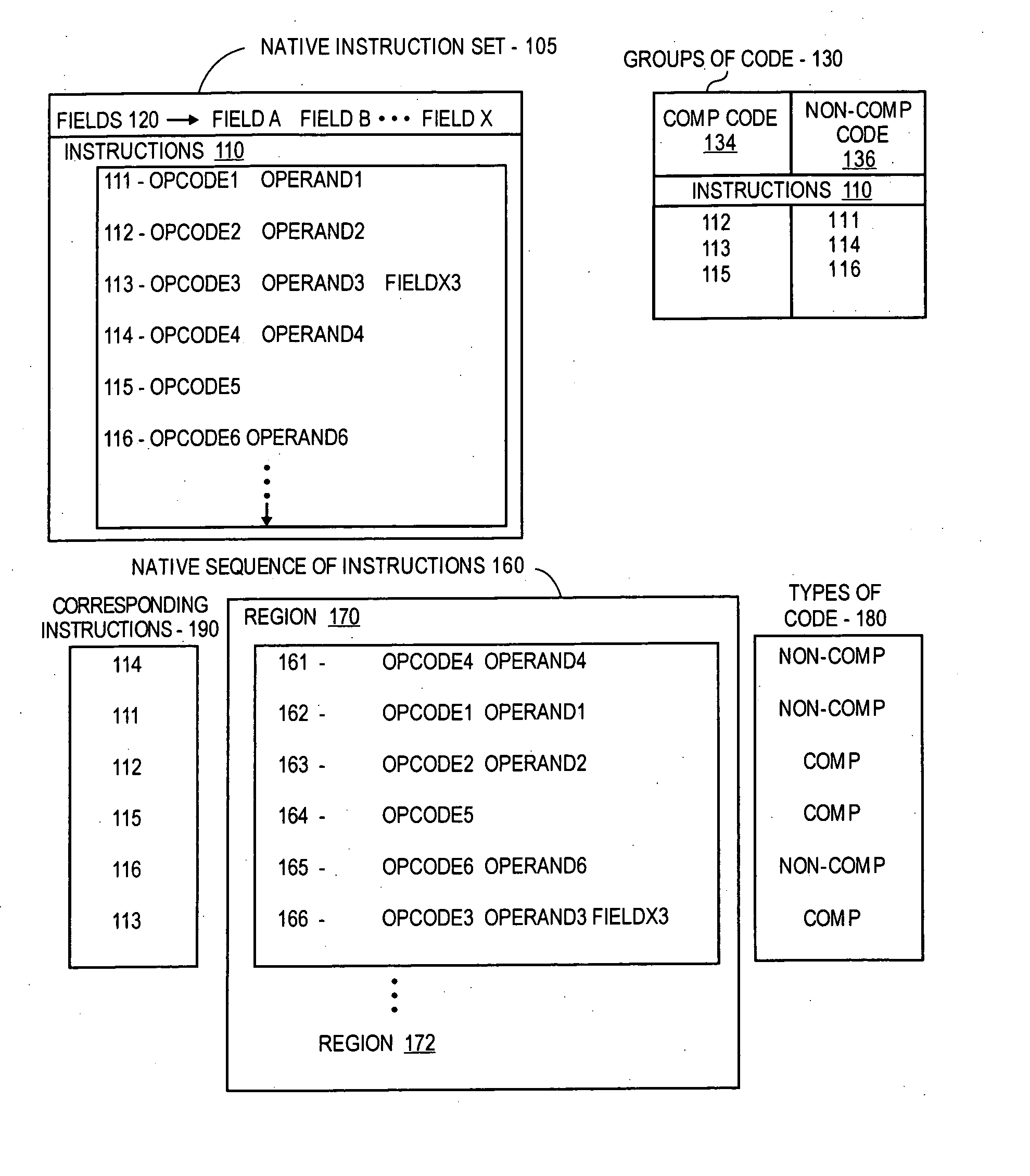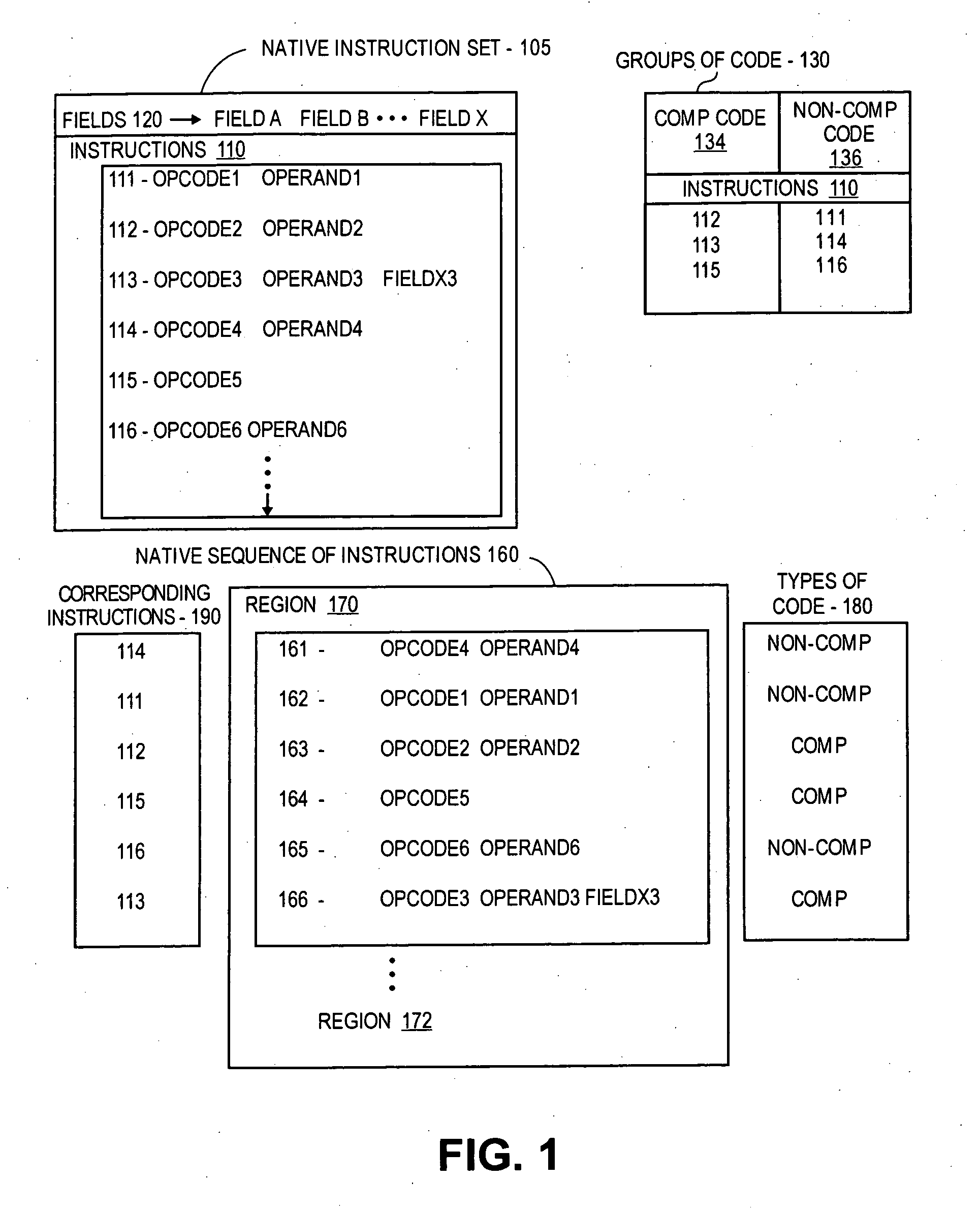Compressing "warm" code in a dynamic binary translation environment
a dynamic binary and translation environment technology, applied in the field of dynamic binary translation of non-native code, can solve the problem of not having a higher-level program availabl
- Summary
- Abstract
- Description
- Claims
- Application Information
AI Technical Summary
Problems solved by technology
Method used
Image
Examples
Embodiment Construction
[0018] In a dynamic binary translation (DBT) environment, a sequence of instructions or a computer program having instructions in a non-native language (e.g., non-native instructions compiled into compiled non-native instructions) may be “translated” (e.g., dynamic binary “translation”, not to be confused with translating “hot” code as described herein, which may be part of a dynamic binary “translation” process) to be “executed” or processed by a processor for another different or native language (e.g., a “native” processor, such as an embedded micro-processor). Such dynamic binary “translating” of non-native code may include “executing” some “cold” regions (e.g., cold code) of the non-native sequence of instructions by interpretation, and “executing” other “hot” regions (e.g., hot code) of the non-native sequence of instructions by translation. The interpreted and translated regions can then be “processed” by the native processor (such as by the native processor processing or exec...
PUM
 Login to View More
Login to View More Abstract
Description
Claims
Application Information
 Login to View More
Login to View More - R&D
- Intellectual Property
- Life Sciences
- Materials
- Tech Scout
- Unparalleled Data Quality
- Higher Quality Content
- 60% Fewer Hallucinations
Browse by: Latest US Patents, China's latest patents, Technical Efficacy Thesaurus, Application Domain, Technology Topic, Popular Technical Reports.
© 2025 PatSnap. All rights reserved.Legal|Privacy policy|Modern Slavery Act Transparency Statement|Sitemap|About US| Contact US: help@patsnap.com



